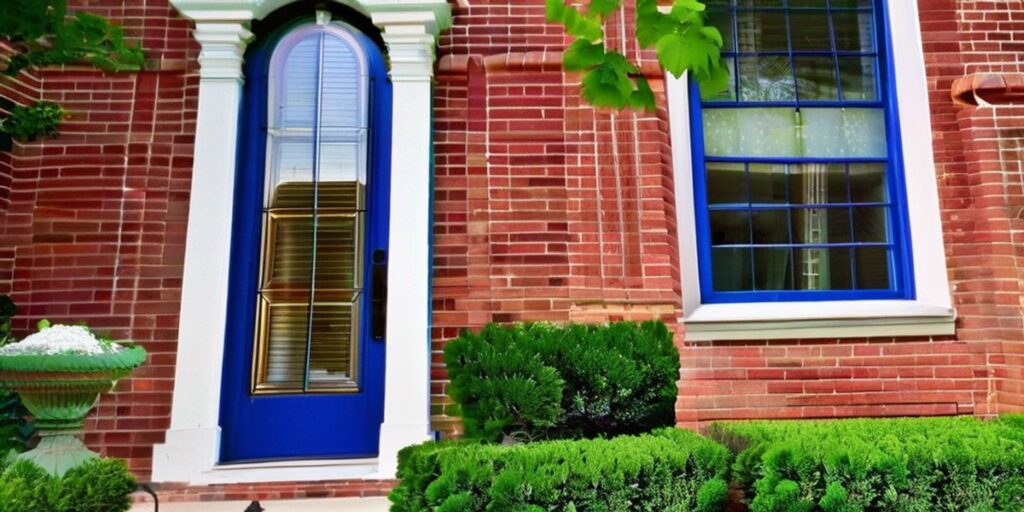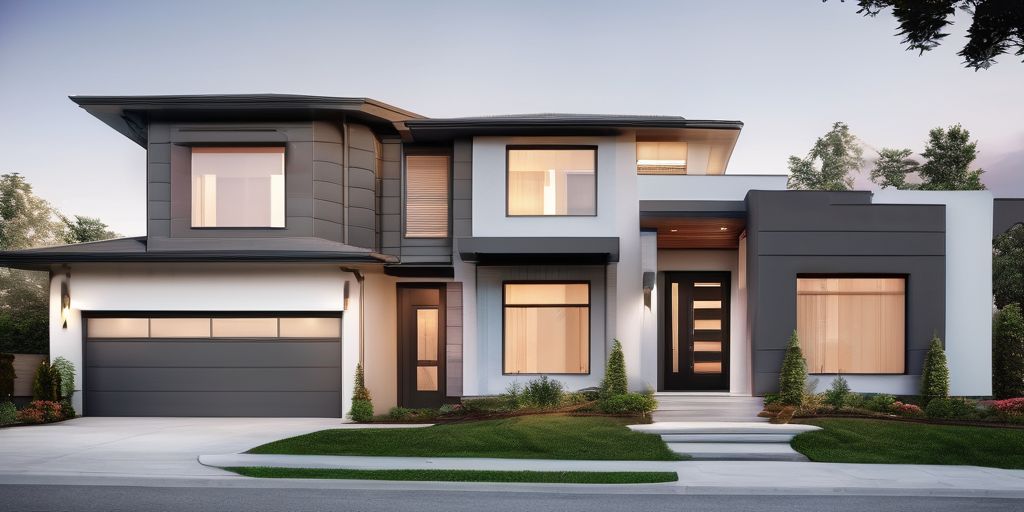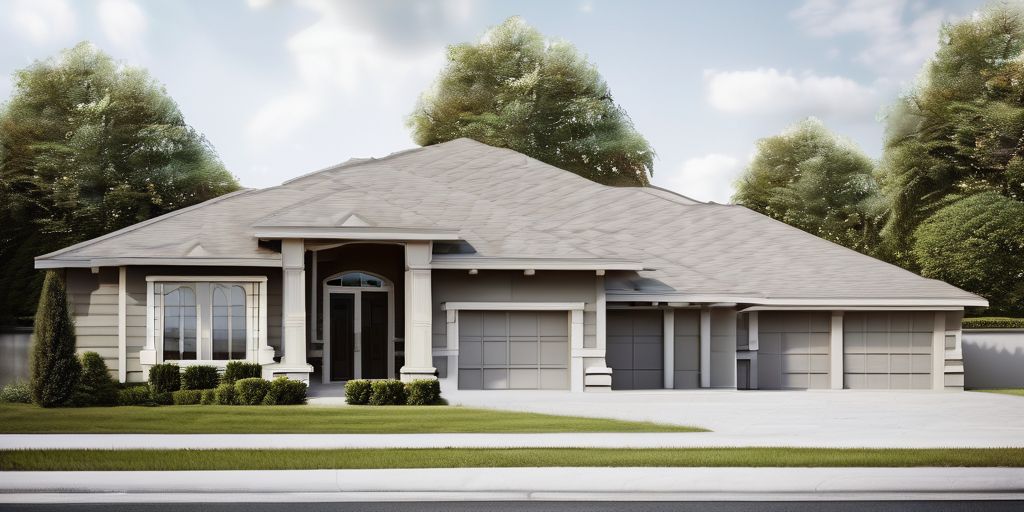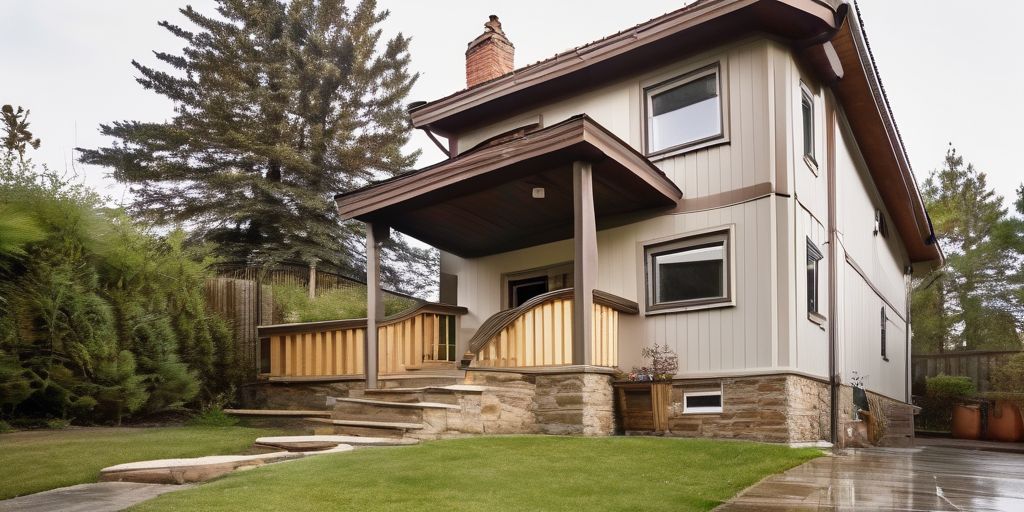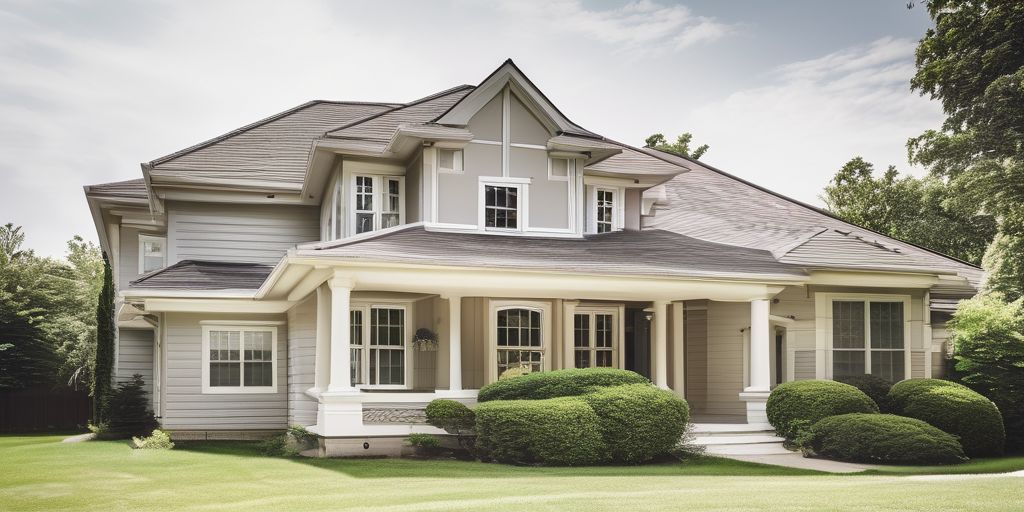Maintaining the historic charm of Cambridge’s architecture while updating external brick paint requires careful consideration and expertise. This article explores the key aspects of harmonizing external brick paint with Cambridge’s historic charm, from understanding the architectural style to choosing the right paint color and application techniques for long-lasting results.
Key Takeaways
- Research local regulations before selecting a paint color to ensure compliance with historic preservation guidelines.
- Consider the surrounding buildings and neighborhood aesthetics when choosing an external brick paint color.
- Consulting with experts, such as historic preservation specialists or professional painters, can provide valuable insights for harmonizing paint with Cambridge’s architectural style.
- Proper surface preparation, priming, and quality paint application are essential for achieving a durable and aesthetically pleasing finish on external brick surfaces.
- Regular inspections, cleaning, touch-ups, and seasonal maintenance are key practices for preserving the aesthetic appeal of external brick paint and maintaining Cambridge’s historic charm.
Understanding Cambridge’s Architectural Style
Distinctive Features
Cambridge’s architectural style is a tapestry of historical influences, each building telling a story of the city’s rich past. The use of local materials is a hallmark of Cambridge’s buildings, often reflecting the natural landscape and the city’s commitment to sustainability.
- Brickwork is a prominent feature, with various patterns and bonds that showcase craftsmanship.
- Decorative elements such as cornices, quoins, and string courses add character to facades.
- Rooflines in Cambridge vary, with gabled, hipped, and flat styles all contributing to the skyline.
The integration of green spaces and public gardens within the urban layout enhances the harmony between built and natural environments.
When considering painting external brickwork, it is essential to respect these distinctive features to maintain the city’s historic charm. The choice of color and finish should complement the existing structures, ensuring that any updates are in keeping with the traditional aesthetic.
Historical Significance
The architectural heritage of Cambridge is not only a testament to the city’s rich history but also a cornerstone of its current identity. Understanding the historical significance of Cambridge’s architecture is crucial when considering any exterior modifications, including painting brickwork. The city’s buildings tell a story of architectural evolution, from medieval colleges to Victorian terraces, each era leaving its indelible mark on the cityscape.
- Heritage homes often feature historic color schemes that are integral to their character.
- Repainting requires careful selection of weather-resistant paint and a finish that is compatible with the brick surface.
- Regular maintenance, including proper cleaning and touch-ups, is essential to preserve both the aesthetic appeal and structural integrity of these buildings.
When choosing paint colors, it is important to maintain the original palette to respect the building’s historical context and ensure it blends seamlessly with the surrounding environment.
Cambridge’s commitment to preserving its architectural legacy can be seen in the meticulous care taken to harmonize new interventions with the old. This includes the use of eco-friendly paints and decorative accents that enhance, rather than overshadow, the brick’s character.
Influence on Modern Design
The architectural heritage of Cambridge has left a lasting imprint on modern design, particularly in the realm of exterior aesthetics. Bold choices in brick paint can bridge the gap between historical fidelity and contemporary flair.
- Preserve historic charm by selecting hues that reflect the building’s period, integrating with surroundings, and respecting original design.
- Choose colors that complement architectural features and enhance curb appeal.
Selecting a brick paint involves considering the surrounding environment, natural and architectural elements, and lighting conditions. Preparation with cleaning and repairing is crucial for a lasting finish.
When harmonizing new paint with historic charm, it’s essential to balance innovation with reverence for the past. This ensures that the unique character of Cambridge’s streetscapes continues to enchant residents and visitors alike.
Choosing the Right Paint Color
Researching Local Regulations
Before selecting a paint color for your brick home in Cambridge, it’s crucial to research local regulations. These rules are in place to preserve the city’s historic character and ensure that any alterations are in keeping with the traditional aesthetic. Here’s what you should consider:
- Planning Permissions: Check if your property requires planning permission for external alterations. This is often the case in conservation areas.
- Historic Districts: Properties within historic districts may have stricter color guidelines to maintain the area’s visual harmony.
- Color Palette Restrictions: Some areas may have a pre-approved color palette. Choosing from this selection can streamline the approval process.
It’s important to remember that compliance with local regulations not only preserves Cambridge’s heritage but also prevents potential legal issues.
Lastly, while not a regulation, it’s worth considering the impact of your color choice on the overall mood and lighting of your property. A well-chosen color can enhance the architectural features of your home and complement its surroundings.
Considering Surrounding Buildings
When selecting a paint color for the exterior of a brick building in Cambridge, it’s essential to consider the architectural harmony with neighboring structures. This not only ensures a cohesive aesthetic but also respects the historical context of the area. Here are some points to keep in mind:
- Historical Palette: Many Cambridge buildings feature a traditional color scheme that reflects their historical significance. Aligning with these hues can enhance the overall charm of the neighborhood.
- Community Character: The color choice should complement the existing buildings, creating a seamless visual flow throughout the community.
- Visual Impact: A color that is too bold or out of character can disrupt the visual balance and may not be well-received by residents or local councils.
It’s important to strike a balance between individual expression and community aesthetics to maintain the unique character of Cambridge.
Remember, the goal is to blend individual taste with the collective appeal of the area, ensuring that the new paint enhances rather than detracts from the historic charm of Cambridge.
Consulting with Experts
When selecting the perfect paint color for your external brickwork, consulting with experts can provide invaluable insights. These professionals have a deep understanding of how different hues can complement Cambridge’s historic architecture. Experts can guide you through the nuances of color selection, ensuring that your choice enhances the building’s character while adhering to local guidelines.
- Consider the following when consulting with experts:
- Their knowledge of historical color palettes and how they interact with Cambridge’s light.
- The impact of different finishes on the appearance of brickwork over time.
- Techniques that can add texture and depth to your paintwork, such as sponging and stenciling.
It’s essential to balance personal preferences with the collective aesthetic of the area to maintain the harmonious charm of Cambridge.
Remember, the goal is not just to choose a color that you like, but one that also respects and enhances the historical context of the surroundings. This may involve exploring a range of neutrals, considering the implications of matte versus glossy finishes, and matching your choice to the surrounding buildings.
Application Techniques for Long-Lasting Results
Surface Preparation
Proper surface preparation is crucial for ensuring that the external paint adheres well and stands the test of time. Before applying any paint, the brick surface must be thoroughly cleaned to remove dirt, grime, and any old, flaking paint. This can be achieved through various methods, including pressure washing or manual scrubbing with appropriate cleaning solutions.
Moisture control is also an essential aspect of surface preparation. Bricks should be allowed to dry completely after cleaning to prevent trapping moisture beneath the paint layer, which could lead to peeling or mold growth. Additionally, repairing any cracks or damage in the brickwork is necessary to provide a smooth and stable surface for painting.
When considering the application of paint, it’s important to enhance the brickwork with contrasting colors and textures that complement Cambridge’s historic charm while prioritizing breathability.
Lastly, applying a suitable primer can greatly improve paint adhesion and longevity. It’s important to select a primer that is compatible with both the brick material and the chosen paint.
Proper Priming
Before the application of the final paint coat, proper priming is essential to ensure the longevity and durability of the paint job on exterior brickwork. Priming serves as a foundation that enhances paint adhesion, which is particularly important in a city like Cambridge where the weather can be quite variable.
- Primer selection should be based on the type of brick and the specific conditions it will face. For instance, a breathable primer is recommended for older, more porous bricks to prevent moisture from being trapped.
- The primer should be applied evenly across the surface, covering all nooks and crannies to create a uniform base for the topcoat.
- It is crucial to allow the primer to dry completely before proceeding with the paint application. This waiting period can vary depending on the product and environmental conditions.
While one-coat paints are marketed for their convenience, they cannot match the adhesion and protection provided by a dedicated primer, especially on surfaces like brick that are exposed to the elements.
By following these steps, you can achieve a finish that not only looks professional but also stands up to the test of time, maintaining the historic charm of Cambridge’s architecture.
Quality Paint Application
Achieving a professional finish when painting external brickwork requires attention to detail and the right techniques. Proper paint application is crucial for both aesthetic appeal and longevity. Here are some tips to ensure a quality finish:
- Use the appropriate tools for the job. Depending on the surface and the desired finish, choose between a brush, roller, or sprayer. Each has its advantages and can contribute to a more uniform coat.
- Apply paint evenly across the surface. This helps to avoid streaks and ensures that the color looks consistent once dry.
- For a harmonious look, especially in historic areas like Cambridge, select a paint color that complements the surrounding buildings and the natural environment.
When painting, it’s important to cover all surfaces thoroughly, but avoid over-application which can lead to drips and sags.
Remember, the goal is to enhance the building’s character while providing a protective layer that stands up to the elements. With careful execution, your painted brickwork can contribute to the charm of Cambridge’s architectural landscape.
Maintaining the Aesthetic Appeal
Regular Inspections
To ensure the longevity and aesthetic appeal of painted brick exteriors, regular inspections are crucial. These inspections help identify potential issues early on, such as cracks or moisture ingress, which can be detrimental to the structure if left unaddressed.
- Inspect the paint for signs of peeling, blistering, or fading.
- Check for any signs of moisture, which can lead to mold or mildew.
- Look for cracks or damage in the brickwork that may need repair.
By conducting these inspections, homeowners can take proactive steps to maintain the integrity and beauty of their property.
It’s important to consider the breathability and moisture control of the paint used, as well as its durability. A well-maintained painted surface not only enhances the charm of Cambridge’s historic architecture but also provides lasting protection against the elements.
Cleaning and Touch-Ups
Regular cleaning and touch-ups are essential to maintain the visual integrity of the external brick paint, ensuring it continues to complement Cambridge’s historic charm. Proper cleaning can prevent the build-up of dirt and pollutants that may otherwise lead to deterioration of the paint surface.
- When cleaning painted brick surfaces, it’s important to use gentle methods. Muriatic acid, although effective for masonry, should be used with caution due to its harsh nature.
- For less aggressive cleaning, a mixture of water and a mild detergent can be effective. Start from the top and work your way down to prevent streaking.
- Touch-ups should be done with precision to match the existing paint color and finish, maintaining the uniformity of the building’s appearance.
It’s crucial to address any paint damage or discoloration promptly to avoid more extensive repairs in the future.
For minor paint corrections, solvent-based paint removers can be used to strip away unwanted paint drips or overspray without causing discoloration to the underlying surface. Always test these products on a small, inconspicuous area first to ensure compatibility with the existing paint.
Seasonal Maintenance Tips
To ensure the longevity of your painted brick surfaces, it’s crucial to adhere to a seasonal maintenance schedule. Regular cleaning and inspections are key to preserving the aesthetic appeal and structural integrity of your home’s exterior. Here’s a simple guide to follow:
- Spring: Inspect for any damage caused by winter weather. Clean off any dirt or mildew that has accumulated.
- Summer: Check for and repair any cracks or chips in the paint. This is also a good time to apply a fresh coat if necessary.
- Autumn: Clear away any debris from your brickwork. Look for signs of moisture penetration and address them before the colder months.
- Winter: Although outdoor maintenance is limited, it’s a good time to plan for any major repairs or repainting projects for the coming year.
By choosing weather-resistant sealants and addressing damage promptly, you can protect your home against the elements and maintain its historic charm.
Remember to include the chimney in your home maintenance plan. Conduct periodic inspections for cracks or missing bits of mortar, and address issues promptly to extend your roof’s life span.
Enhance your home’s charm and increase its value with our expert exterior painting services. At We Paint Siding, we specialize in giving your property a fresh, new look that stands the test of time. Don’t settle for a faded facade; visit our website to explore our gallery of transformations and book your free estimate today. Let us help you maintain the aesthetic appeal of your home with a professional touch that guarantees satisfaction.
Conclusion
In conclusion, harmonizing external brick paint with Cambridge’s historic charm is a delicate balance of preserving the city’s heritage while embracing modern aesthetics. By carefully selecting the right color palette and paint finish, homeowners and businesses can enhance the beauty of their properties while respecting the rich history of the area. Remember, a thoughtful approach to exterior paint choices can truly transform a building and contribute to the overall charm of Cambridge.
Frequently Asked Questions
Can I paint my brick house in Cambridge?
Yes, but it’s important to adhere to local regulations and consider the historical significance of the area.
What paint colors work best with Cambridge’s architectural style?
Earth tones and muted shades are recommended to blend in with the historic charm of Cambridge.
Do I need to consult with a professional before painting my brick exterior?
It’s advisable to seek expert advice to ensure the paint choice complements the surroundings and meets regulations.
How can I prepare the brick surface for painting?
Proper cleaning, repairing any damage, and ensuring the surface is dry are essential steps before painting.
How often should I inspect and maintain the painted brick exterior?
Regular inspections and timely touch-ups can help maintain the aesthetic appeal and prolong the paint’s lifespan.
Are there specific cleaning techniques for painted brick surfaces?
Gentle cleaning methods using mild soap and water are recommended to preserve the paint and brick integrity.

